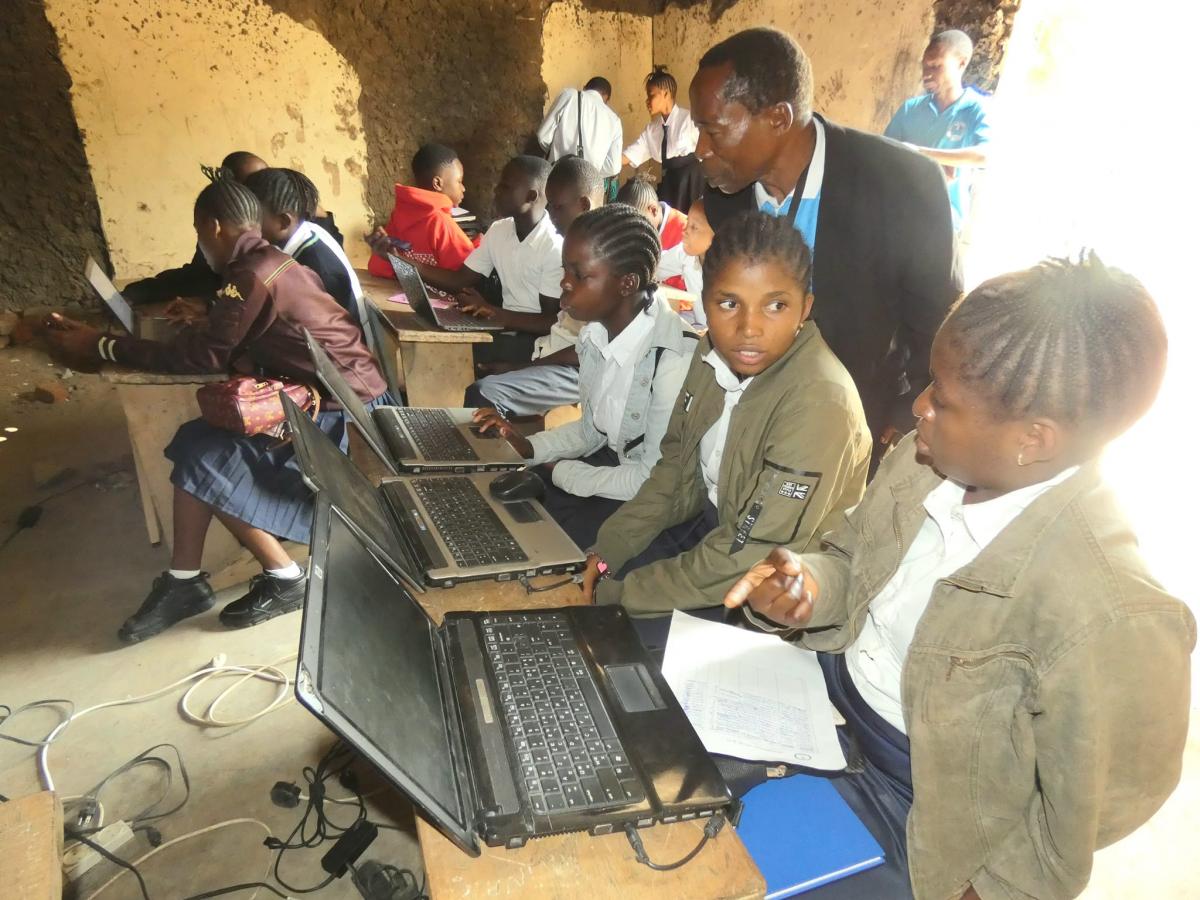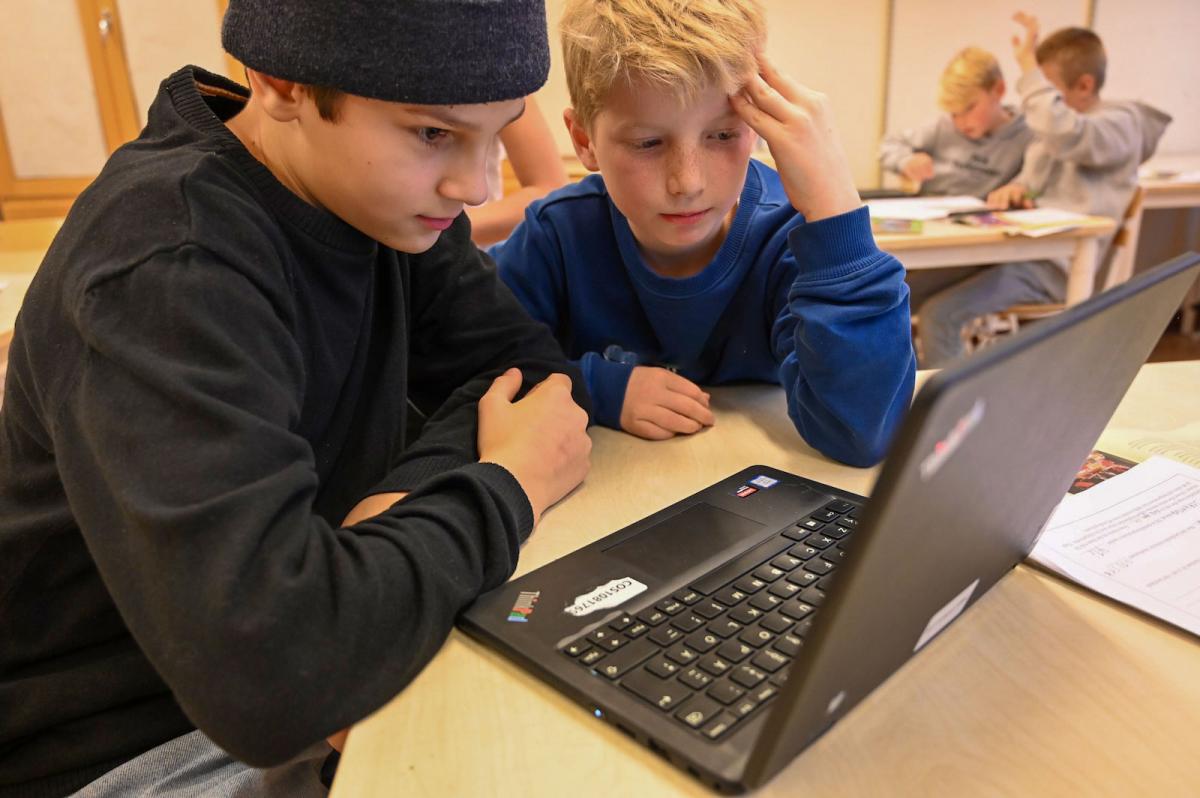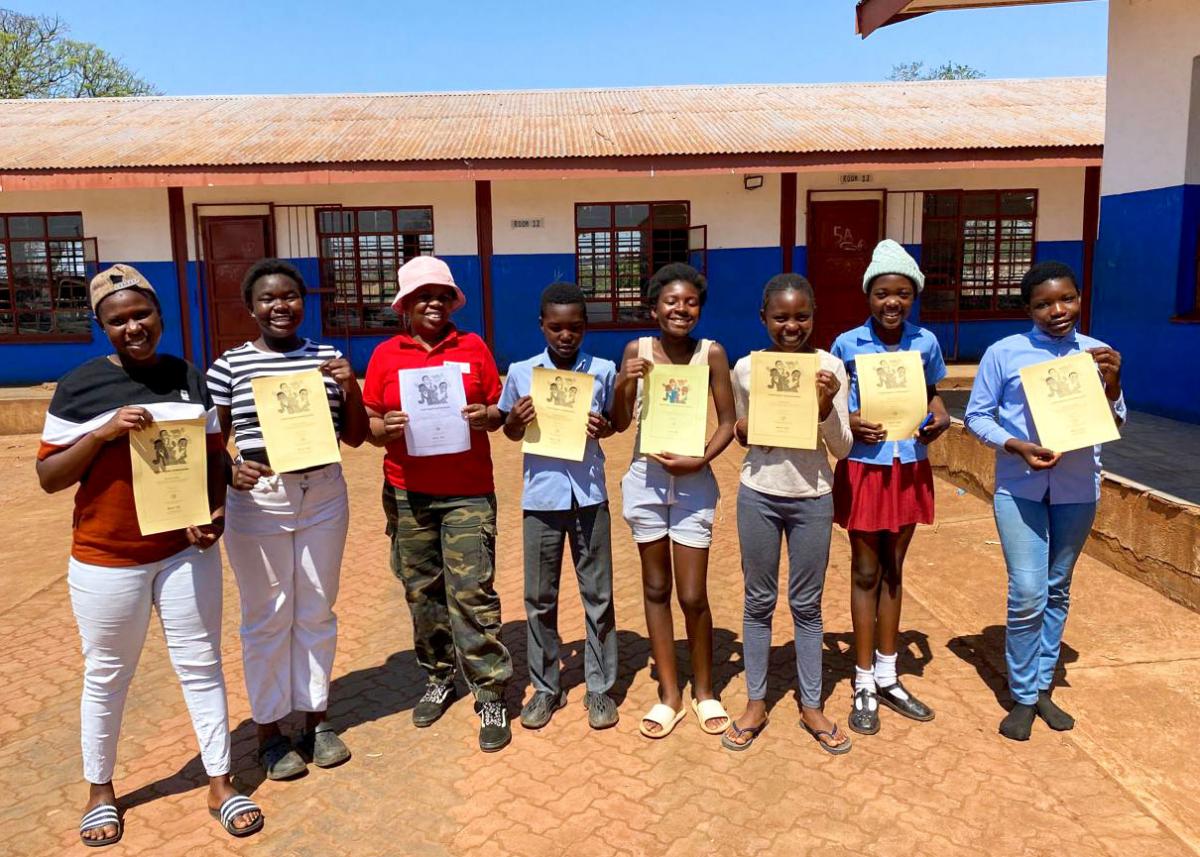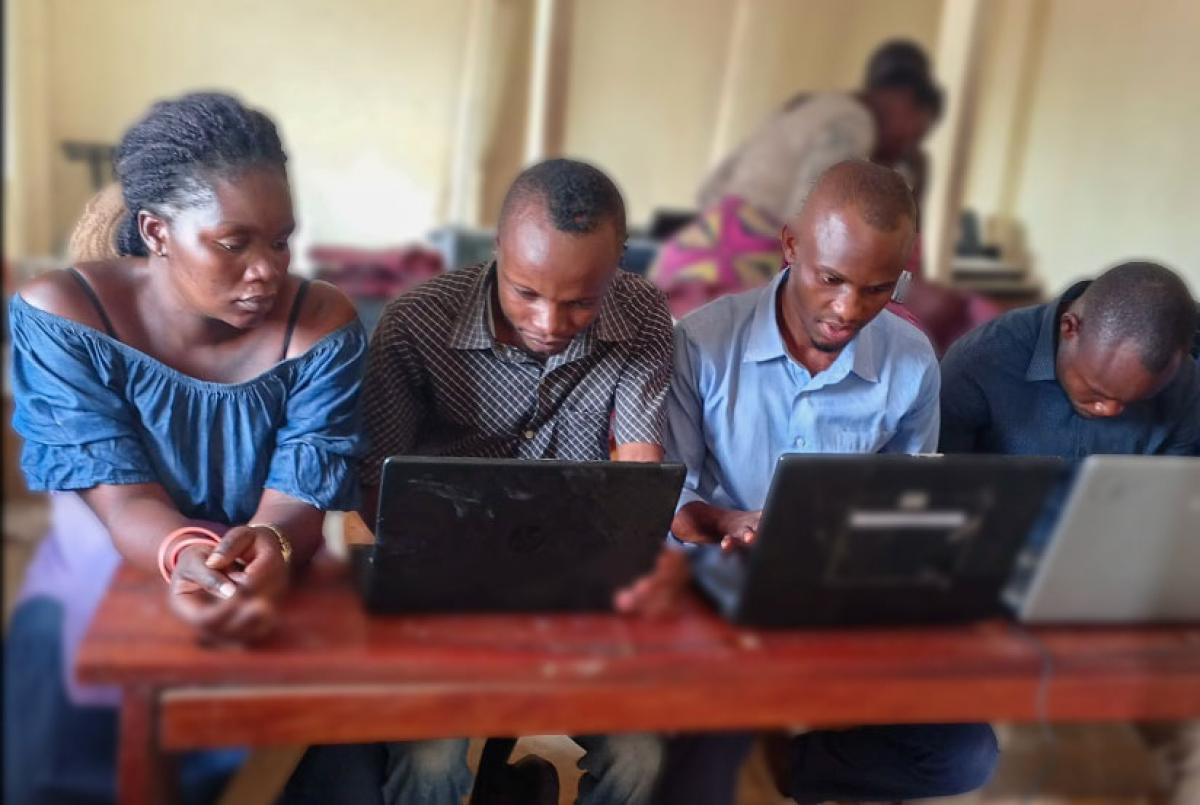
Students in Bunia in Democratic Republic of the Congo are ready to become changemakers.
You can use the Changemaker Challenge course to educate and empower children in classrooms, study circles, or Child Rights Clubs.
The WCP works in many settings, and in fragile states, rural and urban areas. Changemaker Challenge has been produced to allow all children, youth and teachers to use it. If you live where the internet is sketchy, or where children have less or no access to devices, there are ways to get around it, described below. In urban areas and countries with widespread internet access, individual students are of course more likely to have the capacity and devices to go through the course independently.
Individual Students
Students with access to smartphones, tablets, or computers, can complete the course independently online. Introduce the course and address any questions before they begin. Ensure they create an individual account to save their progress. Be prepared to offer technical support and clarify difficult sections. Allow students to progress at their own pace; we do not recommend trying to complete the entire course in one sitting.
If some students have devices like tablets or smartphones at home, they can begin the course in school under your guidance and then continue it at home.

Students, here in Sweden, can work on the child rights ambassador course both individually and together.
Study Groups or Class Settings
If working with a large group, displaying the course on a computer or even a large screen is helpful. We suggest below that students take notes and write answers and reflections on paper or a slate. Note that it is mainly to help the students to reflect and formulate their opinions and thoughts, perhaps some can read sections out loud in the classroom or group, However, you as a teacher or leader do not necessarily have to collect their answers, or grade them.
Steps to Follow when working with groups
If working with a large group, displaying the course on a computer or even a large screen is helpful. We suggest below that students take notes and write answers and reflections on paper or a slate. Note that it is mainly to help the students to reflect and formulate their opinions and thoughts, perhaps some can read sections out loud in the classroom or group, However, you as a teacher or leader do not necessarily have to collect their answers or grade them.
Audio Story
- Listen to the story together.
- If students have internet access at home, they can also listen to the story as “homework”, before discussing it in class.
- If you like, after asking students to reflect on whether the story reminds them of their own experiences or someone they know, replay the audio story and stop when needed.
Think about it – reflection exercise:
- Read each statement aloud.
- Allow students a few seconds to reflect before choosing how much they "agree" or "disagree."
- Use hand-raising or the "opinion line" activity to gauge their positions.
Fact Section:
- Read paragraphs aloud, allowing students to ask questions.
- If possible, provide local examples throughout and explain any difficult words.
- For smaller groups, consider having students take turns reading out loud instead.
Image Exercise:
- Read the introduction aloud.
- Let students reflect in silence.
- Discuss which situations depicted apply to their community. They can share their thoughts verbally or in writing.
Do Something section:
- Read aloud or let students take turns reading.
- Ask students which methods for change they think would work best where they live, and share any additional ideas for making a difference, either verbally or on paper.
Quiz:
- Read the questions and options aloud.
- After each question, have students suggest or write down their answers.
- After completing the quiz, reveal the correct answers and proceed to the next course step.
- As the teacher/leader you will later judge if all students have enough knowledge to receive a certificate and become Child Rights Ambassadors. <

New child rights ambassadors at a school in rural South Africa proudly show their certificates.
Certificate
After completing the course, there are ways to access and download personal diplomas for each participant. Once you have completed the course, there will be a link to follow so that you can enter the names of each student and download diplomas for them.

Teachers in the Democratic Republic of the Congo use the course for professional development before teaching their students.
Teachers’ training
Following the above steps for groups, the course can also be used as a teacher training tool. All teachers that undergo the training online, or in a group, will receive certificates.